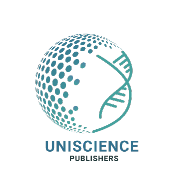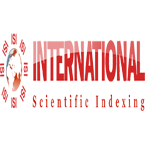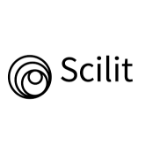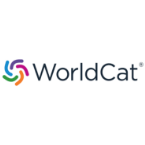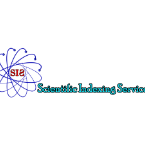Article / Review Article
1Professor of Nextek and NEXTLOOPP.
Prof. Edward Kosior,
Professor of Nextek and NEXTLOOPP
26 August 2024 ; 16 September 2024
As the world shifts from its reliance on the old linear fossil-fuel based feedstock model to one based on circularity, a much needed circular plastics economy is starting to take shape.
This circular plastics economy is founded on the sustainable model of plastics remaining in circulation for as long as possible. Gone are the days of single-use. Retaining the value of plastics requires seeing ‘waste’ as a valuable resource that can be sustainably recycled at minimal CO2e cost.
To prolong plastics’ lifespan means embedding reuse and recycling into every product manufactured, something Europe is on track to achieve. In fact the plastics sector is now more than halfway on its roadmap goal of 25 percent circular plastics by 2030.
According to a 2024 report by Plastics Europe, availability of post-consumer recycled content has increased by 70 percent since 2018. Currently, 13.5 percent (7.3 Mt) of all plastic resins converted into new products and components in Europe are circular plastics. The report also found that the recycling rate reached 26.9 percent (8.7 Mt) in 2022, marking the first time that more plastic waste is being recycled than sent to landfill.
Although this represents a significant milestone for plastics’ circularity, we urgently need to accelerate and commercialise the best innovative developments in sorting and recycling technologies to meet the demand for recycled content and make plastic a truly sustainable option.
Boosting plastics’ circularity means addressing each polymer individually as what works for the likes of PET is not directly transferrable to say the likes of Polypropylene (PP). Just as crucially PP can be further broken down to polymer applications, and this brings us to post-consumer food-grade PP.
Despite polyolefins being the largest polymer sector, to date, PET is still the only polymer with a well-defined circularity pathway.
Yet PP is one of the most prolific polymers, accounting for 20 percent of global plastic production – a figure growing at an annual rate of 6 percent. In 2018, production reached 56 million metric tons (61.7 tons), and it is projected to reach 83 million metric tons by 2025, with an estimated market value of $147 billion.
The largest market for consumer-focused PP is food packaging, which plays a crucial role in protecting and storing food. It is commonly used for single-serve containers, such as soup cups, yogurt containers, ice cream tubs, and takeaway food containers.
Until recently, food-grade PP packaging was made exclusively from virgin plastics due to the industry’s challenges in producing high-quality food-grade recycled PP (FGrPP). This difficulty arose partly because global recycling efforts have prioritised materials like PET drink bottles and single-use plastics such as bags and straws.
On the upside PP is now present in the post-consumer waste stream at levels over 10 percent, which is a critical threshold percentage of the packaging stream. This means PP can be readily recycled once it is collected within community recycling schemes.
Importantly approximately 1.6 tonne/1.8 ton of CO2e can be saved if we use FGrPP instead of virgin polypropylene resin.
Nextek, with a focus on tackling hard-to-recycle materials, had identified a gap in the recovery and value of food-grade polypropylene (PP) nearly a decade ago. Since then their efforts centred on developing scientific methods to enhance efficient sorting and effective decontamination of this valuable resin to incorporate it back into food-contact packaging.
Recognising that a significant challenge in recycling post-consumer PP for food-grade use resides in accurately identifying and separating PP packaging that previously contained non-food products from food packaging, led the Nextek team to prioritise their exploration of innovative technology to accurately identify and separate one from the other.
Traditionally, food-grade recycled PP has been limited to closed-loop recycling, manual sorting, or advanced recycling technologies based on mass balance.
Nextek developed cutting-edge invisible fluorescent markers that emitted specific wavelengths when illuminated under ultra-violet light at 365nm. These markers, which were invisible to the naked eye, emitted a signal which, coupled with the near-infrared (NIR) spectroscopy response of the polymer, uniquely identified and ejected the packaging item.
Nextek had also been fine-tuning a high-performance decontamination technology that extracted volatile and semi-volatile compounds from PP. This was done using a two-step process. The first decontamination step occurred during a high-temperature extrusion stage under high vacuum for an extended residence time and was followed by a second stage of decontamination through exposure to vacuum in the solid state for a much longer period.
By 2020 Nextek’s advanced technologies were ready for commercial application, aligning with a growing demand for high-performance FGrPP from brands committed to sustainability.
Recognising the importance of supply chain collaboration, Nextek launched NEXTLOOPP in October 2020. This global initiative, which aimed to implement Nextek’s cutting-edge technologies for separating and decontaminating food-grade PP invited participation from the entire plastics supply chain.
The NEXTLOOPP project aimed to bridge a significant gap in the packaging recycling sector by fostering a sustainable circular economy for food-grade PP. It sought to help brands achieve their recycling goals, reduce virgin plastic use, lower CO2 emissions, and divert packaging from landfills and waste-to-energy facilities.
Four years on and this multi-participant project now unites 50 major organisations in their commitment to develop validated local solutions for the end-of-life management of post-consumer food-grade PP packaging.
Since launching, NEXTLOOPP continued to re-fine and trial Nextek’s technology with its participants. In 2021 tracer-based sorting trials held at Tomra in Germany used NEXTLOOPP member packs co-mingled with 20 percent non-food packs and the results were a resounding 99.9 percent food-grade sorting purity at maximum production speed.
In 2023 the project ran trials using TOMRA’S AUTOSORT unit, FLYING BEAM, which was integrated with UV illumination for the initial trials. Direct spectrophotometric measurements were then used to analyse the strength of the fluorescence emissions and ensure that there was enough fluorescent signal for the food-grade labelled packs to be sorted.
According to internal tests, the trials resulted in 100% purity and 100% yield.
Whilst it was clear the PolyPPRISM marker technology was highly efficient and allowed a wide range of products to be uniquely separated from a mixed stream of packaging items, it did require brand owners to make changes to their labels and industry was slow in deciding which overall standard to opt for.
In the meantime, NEXTLOOPP had also been exploring the use of AI in sorting together with TOMRA and the breakthrough came in February 2024 during sorting trials that utilised near-infrared and visual spectrometry alongside the company’s latest deep-learning technology, GAINnext™. During these trials, GAINnext™ sorted 5 tons an hour of mixed plastic waste and exceeded 97 percent purity levels in food-grade packaging applications.
This significant advancement marked a pivotal moment in the NEXTLOOPP project as it means TOMRA’s GAINnext™ can be implemented across all PP packaging sorting facilities, facilitating the production of valuable food-grade PP PCR streams.
By providing a well-sorted food-grade PP PCR stream, GAINnext™ will enable the NEXTLOOPP decontamination process to be implemented in a larger number of recycling operations worldwide.
Producing recycled food-grade PP resin that is safe to be included in food-contact packaging is now on the close horizon. To help brand owners gain a clear understanding of how best to make their packaging as recyclable as possible NEXTLOOPP have been collaborating with their participants on the key packaging design facets that have the biggest impact.
They started with the actual shape of the pack given that the format of most consumer-targeted PP packaging actually reduces the possibility of them being in a consumer-misuse scenario, something that is more likely to occur in PET.
A large proportion of PET packaging are bottles that are very durable, generally with tight closures, making them an ideal container to store hazardous materials. The same applies for HDPE packaging that also mainly come in bottle form with a closure.
PP food containers, on the other hand, are less likely to be produced in bottle shape given that PP food packaging is usually pots, tubs, or trays and this packaging format has limited closure capacity, as such is less likely to be mis-used.
If we are to close the loop on post-consumer food-grade PP packaging we need to quantify the specific sorting and decontamination requirements for the recycling processes to achieve a food-grade recycled PP.
To do this required uncovering the residual contamination levels of post-consumer PP packaging, something which, up until now, had never been characterised.
Taking into account the shape of food-contact packaging facilitated the calculation of the mis-use/mis-selection rate within PP feedstocks, enabled NEXTLOOPP’s science-based investigation to better define the residual levels that could potentially migrate into food.
It also gave the team a clearer understanding of which molecules should be targeted via Nextek’s unique decontamination processes.
The NEXTLOOPP study analysed post-consumer PP flakes to identify substances likely to cause samples of recycled PP to be outliers from the expected input stream. These outliers could pose challenges to the overall safety of the recycled plastics, and the study was particularly focused on checking whether the substances observed might potentially be genotoxic.
To identify the molecular composition and potential areas of concern, NEXTLOOPP conducted extensive analysis and testing on multiple batches of post-consumer food and non-food packaging. These samples were meticulously sorted into mono-polymer fractions, working with 20-tonne batches of PP bales sourced from a UK-based materials recovery facility (MRF). The team utilised automatic optical sorters to classify items into colour fractions: natural (clear), white, and coloured. Each fraction was further hand-sorted into food-related and non-food-related packs.
The analytical study encompassed 700 tests, each examining approximately 17,500 polypropylene (PP) packs. For each test, 25 significantly sized flakes were analysed, representing about 7 percent of a combined batch of 260,000 packs.
This contamination study revealed that contamination levels in PP were about 10 times lower than those typically found in HDPE milk bottles and 100 times lower than in PET. While this result aligned with expectations given PP’s typical uses in packaging, it was the first time such precise characterisation had been conducted.
This critically important data defined a new benchmark of the type and concentration of potential contaminants and gives the NEXTLOOPP team the confidence to use Nextek’s unique PPristine™ food-grade recycled PP (rPP) in food-contact packaging.
Given that the substances could be derived from the mis-selection of an item of non-food PP packaging, which is not necessarily a case of misuse, this is a vital criterion for food safety evaluations.
Certainly the performance standards established through this research offer organisations the technical, commercial, and legal assurance necessary for incorporating food-grade rPP into food-contact applications.
To date the NEXTLOOPP project has converted over 60 tons of PP packaging and created seven grades of material. Prototype resins have been extensively trialled in injection moulding and extrusion manufacturing as replacements for virgin PP resins.
During one more recent trial 18 of NEXTLOOPP’s brand and converter participants finalised 55 commercialisation trials using five PPristine™ resin grades; Natural food-grade IM, Natural food-grade, White food-grade, Mixed Colour food-grade and non-food grade Mixed Colour INRT. The results were all successful due to the careful preparation of the processing trials by the NEXTLOPP team and the staff from the convertors.
As an example, trials using 30 percent of NEXTLOOPP’s PPristine™ resins in extrusion and thermoforming trays achieved product quality that is comparable with virgin products with no changes in processing conditions.
Learnings from all the trials have given NEXTLOOPP participants the opportunity to identify challenges and possible roadblocks that the NEXTLOOPP technology participants have addressed as they arose.
In so doing a range of innovative products have been launched on the market that are already having a positive impact on industry. These include adhesive-free mono-material IMLs that are fully recyclable, PP lids to replace the current foil lids on PP tubs that leave a residue that impacts sorting, and innovative PP wash-off label adhesives.
Of course rigid PP packaging is just one of plastics’ many facets, and flexible PP films could be described as trickier still to recycle.
According to a report by Plastics Recyclers Europe the combined use of PE and PP to produce flexible films was about 11 million tonnes in 2020. Of this 23 percent is used for food-contact packaging, which is why the Nextek team have also been trialling ways to recycle PP films back into food-grade material for several years now.
To date this process has been held back by lack of technology. In the UK alone only 8 percent of post-consumer film was recycled in 2021 and, even then, these films were only turned into low-value products.
Existing film recycling processes are usually difficult to run, require relatively large water consumption and are generally unable to decontaminate films to food-grade standards.
The Nextek team has now refined a ground-breaking waterless decontamination process for polyolefin (LDPE, LLDPE,HDPE,PP) films that is based on super-critical CO2 (scCO2) and green co-solvents. This innovative technology, COtooCLEAN, is highly effective in decontaminating polyolefin films back to food-grade standards in a waterless process. It also has the capacity to remove oils and printing inks.
It has been estimated that COtooCLEAN’s carbon footprint is 0.03kg/kg of processed recyclate based on comparisons with industrial decaffeination processes that operate at similar temperatures and pressures but for much longer times.
The CO2 footprint of recycling PE films to granules is approx. 0.6 kg CO2/kg against virgin PE of 2kg CO2/kg. This provides a saving of approximately 1.4kgCO2/kg of recyclate used.
Supercritical CO2 is commonly used to extract components like caffeine from coffee and tea. It is a non-toxic, non-flammable, and non-corrosive solvent that can selectively remove contaminants with the help of co-solvents.
Dissolved contaminants can be isolated through a simple phase change, freeing the CO2 for reuse as a solvent in a constant loop. In this way, the process does not produce aqueous waste containing impurities and contaminants, or decontamination solvents that could themselves be hazardous materials as seen in some current industrial decontamination processes.
We live in a world where the sheer volume of waste and its resulting mis-management pose the double threat of direct pollution and loss of resources. This situation will only get worse as populations continue to grow.
It has been estimated that by 2030 the energy contained in items that get thrown away will represent up to 15% of our current CO2 emissions.
Between now and then, carbon emissions associated with the production of what eventually becomes municipal waste will grow by up to two-thirds, undermining efforts in other areas of the economy that are getting the most attention, such as energy and transport systems.
Yet a future where plastic becomes a sustainable option is possible, however the industry still has to overcome a number of bottlenecks to reach this end-point. Progress is not uniform across the plastics value chain and the increasing competitiveness gap between Europe and the rest of the world still overshadows the plastics circular economy.
Having said that we have no other option than to continue fast-forwarding the best technologies to address the hurdles. The acceleration of tech is such that these solutions will rapidly gain momentum, the advent of AI Sorting is just one such example.
We are on the cusp of a plastics sustainability revolution but to maximise on this we must remain focused on the end goal at all times; to close the loop on all plastic produced and reduce the world’s reliance on virgin materials.
